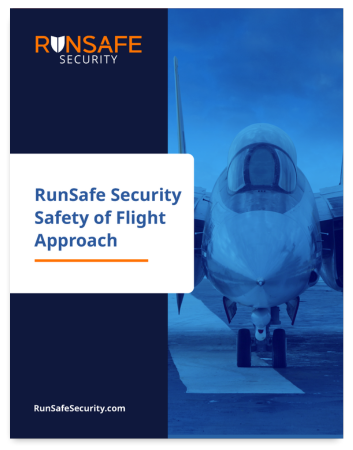RunSafe Security Safety of Flight Approach
Download our white paper to learn how RunSafe is certifying RunSafe Protect as a TQL-1 tool.
In this white paper, you will learn:
- How RunSafe Protect works to defend software from cyber threats by relocating functions in memory uniquely for each instance
- How RunSafe Protect will be qualified as a Tool Qualification Level 1 (TQL-1) tool under DO-330
- The process for certifying RunSafe Protect as airborne software at Design Assurance Level A (DAL-A) under DO-178C
- How RunSafe Protect helps to satisfy the “Defense in Depth” and “Ease of Maintenance” principles of DO-326/356 for airworthiness security
- The steps involved in the RunSafe Protect development process, including planning, requirements definition, design, implementation, testing, and verification
RunSafe Protect and Safety of Flight
RunSafe Protect will be certifiable for flight safety at the highest level, designed to meet the stringent requirements of DO-178C at Design Assurance Level A and DO-330 at Tool Qualification Level 1.
RunSafe Protect comprises two components: one that operates during compilation and another during execution. By embedding RunSafe Protect into development and operational environments, flight software gains enhanced unpredictability and robustness.


Elevate Your Flight Software’s Security
RunSafe Protect mitigates memory-based vulnerabilities, enhancing overall system security without impacting performance or functionality. In addition to its cybersecurity benefits, RunSafe provides a detailed tool qualification process, demonstrating how RunSafe Protect meets the highest standards for flight safety tools.
Read the white paper to learn how RunSafe Security is working toward helping you stay ahead of cyber threats and maintain the highest level of flight safety.
